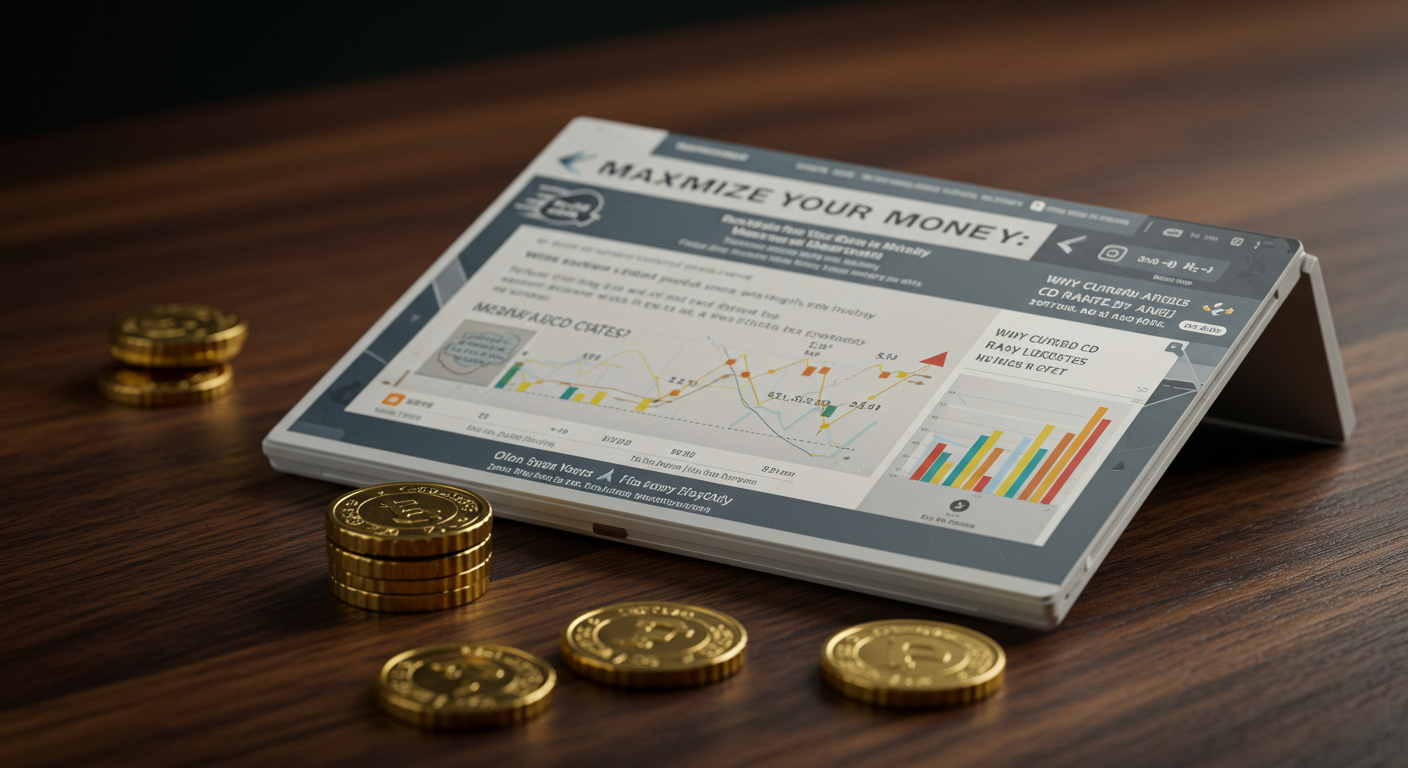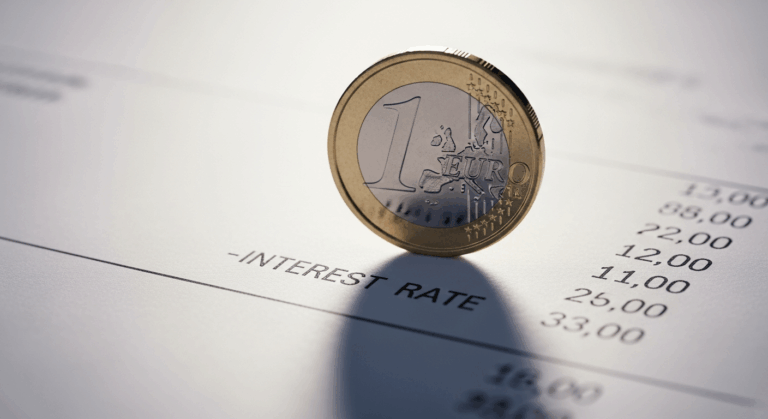Are you exploring ways to make your money work harder for you through effective savings products? With recent discussions suggesting that Certificate of Deposit (CD) rates might be approaching their highest levels in the current cycle, it’s an opportune moment to understand what this means for your savings strategy. This article will delve into the current landscape of CD rates, explain why they might be peaking, and provide actionable insights to help you navigate your financial options without making specific recommendations.
Understanding the dynamics of financial products like CDs can seem daunting, but it’s crucial for making informed decisions. We aim to break down these concepts into easy-to-understand information, empowering you to potentially enhance your savings outcomes.
What Exactly is Happening with CD Rates? The Current Scenario
Recently, there’s been considerable buzz in the financial world about the trajectory of interest rates offered on various savings products, particularly Certificates of Deposit. After a period where rates on savings vehicles climbed significantly, driven by central bank policies aimed at managing inflation, we are now observing signs that these rates, especially for CDs, could be at or near a plateau. This doesn’t mean rates will plummet overnight, but the rapid ascent we’ve witnessed may be slowing, with a potential for gradual declines in the medium term.
But first, what is a Certificate of Deposit? A CD is a type of savings account offered by banks and credit unions. When you open a CD, you agree to deposit a specific amount of money for a predetermined period, known as the “term length.” This could range from a few months to several years. In return, the financial institution typically pays you a fixed interest rate, which is usually higher than what you’d get from a regular savings account. The catch? If you withdraw your money before the term ends, you’ll likely face an early withdrawal penalty.
The objective data points to many financial institutions still offering attractive Annual Percentage Yields (APYs) on CDs. However, financial commentators and analysts are noting that the upward momentum has lessened. This observation is based on a combination of factors, including inflation trends, employment figures, and the forward guidance provided by central monetary authorities like the Federal Reserve.
Why Might Certificate of Deposit Rates Be Reaching a Peak?
The interest rates you see on consumer savings products like CDs and high-yield savings accounts are not set in a vacuum. They are heavily influenced by the broader economic environment and, most directly, by the policy decisions of a country’s central bank. For instance, when a central bank raises its benchmark interest rate (like the Federal Funds Rate in the U.S.), banks often follow suit by increasing the rates they offer on deposits to attract and retain customer funds. This is what we’ve seen over the past couple of years as efforts were made to combat rising inflation.
So, why the talk of a peak? Several indicators suggest a potential shift:
- Inflation Moderation: Inflation, which was a primary driver for rate hikes, has shown signs of cooling in many economies. As inflation comes under better control, the pressure on central banks to continue aggressively raising rates diminishes.
- Central Bank Signals: Monetary policy statements and projections from central banks may indicate a pause in rate hikes or even hint at potential rate cuts in the future if economic conditions warrant. Banks often adjust their CD rate offerings proactively based on these anticipated future movements.
- Economic Outlook: Broader economic forecasts, including those for growth and employment, play a role. If economic growth is expected to slow, central banks might consider easing monetary policy, which would typically lead to lower interest rates across the board.
It’s important to understand that these are trends and outlooks, not certainties. However, for savers, this “peaking” environment presents a specific window of opportunity for certain types of financial products.
Strategic Considerations for Your Savings: The “Lock-In” Opportunity
If CD rates are indeed at or near their peak, this presents a strategic consideration for savers: the opportunity to “lock in” a high interest rate for a defined term. If you open a CD today with a favorable APY, that rate is guaranteed for the entire term of the CD, regardless of whether overall market interest rates fall later. This is a key advantage of CDs over variable-rate accounts like traditional savings or even some high-yield savings accounts (HYSAs), where the APY can fluctuate with market conditions.
Let’s compare briefly:
- Certificates of Deposit (CDs): Offer a fixed rate for a fixed term. Ideal if you believe rates will fall and you don’t need immediate access to the funds.
- High-Yield Savings Accounts (HYSAs): Offer more liquidity (easier access to your money) but typically have variable rates. If market rates fall, the APY on your HYSA is likely to decrease too. These are excellent for emergency funds and short-term savings where access is key.
- Money Market Accounts (MMAs): Often blend features of savings and checking accounts, may offer check-writing privileges or a debit card, and rates are variable. They can sometimes offer competitive rates, similar to HYSAs.
When considering a CD, key factors include:
- Term Length: CDs can range from 3 months to 5 years or even longer. Choosing a term length depends on your financial goals and your outlook on interest rates. If you believe rates will fall significantly, a longer-term CD might seem appealing to lock in a high rate for longer. However, this also means your money is tied up for that period.
- Early Withdrawal Penalties: Understand these clearly. They are usually equivalent to a certain number of months’ interest. Only commit funds to a CD that you’re confident you won’t need before maturity.
- FDIC/NCUA Insurance: Ensure your deposits are within the insurance limits provided by the Federal Deposit Insurance Corporation (for banks) or the National Credit Union Administration (for credit unions). This protects your principal and earned interest up to the coverage limit.
Exploring various savings options is a crucial part of personal finance.

Practical Steps and Navigating Your Options
If you’re considering taking advantage of the current CD rate environment, here are some practical steps:
- Shop Around for the Best Rates: Interest rates on CDs can vary significantly between financial institutions, including traditional banks, online banks, and credit unions. Online banks often offer more competitive APYs due to lower overhead costs. Use comparison websites or check individual bank sites.
- Consider a CD Ladder: This is a strategy where you divide the total amount you want to invest in CDs into several smaller amounts and invest them in CDs with different maturity dates. For example, if you have $5,000, you might put $1,000 into a 1-year CD, $1,000 into a 2-year CD, and so on. As each CD matures, you can reinvest it based on the prevailing interest rates or use the cash if needed. This strategy provides a balance between locking in good rates and maintaining some liquidity.
- Align with Your Financial Goals: Is this money for a down payment on a house in two years? Or is it part of your longer-term, low-risk savings? Your goals will influence the appropriate CD term.
- Read the Fine Print: Always understand the terms and conditions, especially regarding early withdrawal penalties and how interest is compounded and paid.
The current interest rate environment doesn’t just affect savings products; it has a ripple effect on other financial areas. For instance, while high rates are good for savers, they mean higher borrowing costs for loans like mortgages and personal loans. Similarly, changes in interest rates can impact the returns on fixed-income investments like bonds. Understanding this broader context can help in overall financial planning. You can learn more about various financial products on our site.
The Bigger Picture: Savings Products in Your Financial Toolkit
Whether it’s a CD, a high-yield savings account, or another savings vehicle, these financial products are tools designed to help you achieve specific financial objectives. An emergency fund, typically recommended to cover 3-6 months of living expenses, is best kept in a liquid and safe account, like an HYSA, even if the absolute top rate isn’t the primary concern.
For funds beyond your emergency savings, where you have a clearer timeline for when you’ll need the money (or if you won’t need it for a while), CDs can be an excellent component of a diversified savings strategy, especially in an environment where securing a favorable fixed return is possible. The key is to match the features of the savings product—be it liquidity, rate type (fixed or variable), or term length—with your individual needs and risk tolerance.
Building a robust savings plan involves understanding the different types of accounts and products available and how they fit into your overall financial health. The current attention on CD rates serves as a good reminder to regularly review your savings strategy and ensure it’s optimized for current conditions and your future goals.
Disclaimer: Please remember, the information provided in this article is for educational purposes only and should not be considered financial advice or an investment recommendation. Market conditions can change, and it’s always best to assess your own financial situation or consult with a qualified financial advisor before making any decisions about financial products, savings products, or investment products.
Frequently Asked Questions (FAQ)
- Q1: If I open a Certificate of Deposit and market interest rates go down afterwards, will the rate on my CD also decrease?
- A: No, one of the primary benefits of a standard Certificate of Deposit is its fixed interest rate. Once you open the CD and lock in the rate (APY), that rate is guaranteed for the entire term of your CD, regardless of whether prevailing market interest rates fall or rise during that period. This is why CDs can be attractive when rates are perceived to be peaking.
- Q2: In the current environment, what’s generally better: a CD or a High-Yield Savings Account (HYSA)?
- A: There’s no single “better” option; it entirely depends on your individual financial needs and circumstances. If you prioritize liquidity and need to access your money easily and potentially frequently (e.g., for an emergency fund), an HYSA is often more suitable, even if its variable rate might decrease if market rates fall. If you have a sum of money that you’re confident you won’t need for a specific period (the CD’s term) and you want to secure a potentially higher fixed rate of return, especially if you believe rates might decline, then a CD could be a more advantageous choice. Many people use a combination of both for different savings goals.





